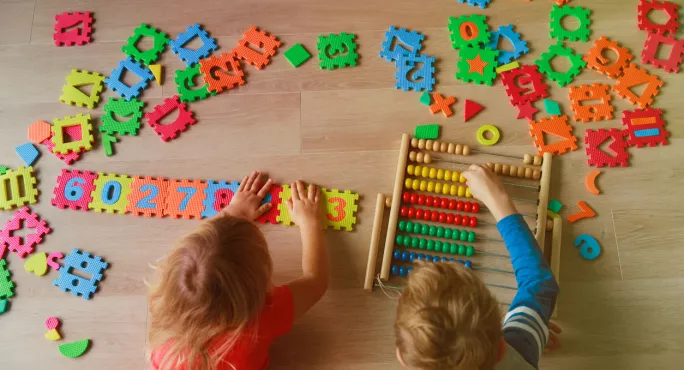5 easy ways to boost EYFS pupils’ independence

Consider these two scenarios in a primary classroom:
Scenario A - As students arrive in the classroom, they take off their coats and put them in the coat area. They put their bags in their lockers. They look at the board for the morning work instructions and follow them without having to ask for help.
Scenario B - The students arrive into the classroom, they come to you, one by one, asking where to put their bags and coats. They then ask you what they are doing for the morning activity. When you direct them to the board, they read it and instantly say something like, “I don’t know what to do.”
A sounds like a dream, B the mundane reality - but does it have to be that way?
EYFS: Encouraging pupils to be independent
Having worked with early years pupils for a few years myself and taking inspiration with two experienced EYFS teachers, these are some ideas that I have found can help to boost independence in young learners throughout the day.
1. Turn requests for help into teaching moments
This is a big one. EYFS pupils will ask for help with almost anything they can: zipping up their coats, getting a pencil, putting away their bag and sometimes even going to the toilet!
Rather than simply doing it for them, though - which only encourages them to keep asking you to do it - it’s better to try and prompt them to take charge. For example, the conversation about helping to do up a zip could go as follows:
“Can you do my zip?”
“You can try? What do you hold first?”
“The zip.”
“Do you pull it down or up?”
“Down.”
“Show me.”
This might not work the first time but giving them the chance to solve the problem themselves will tell them the story that they can navigate problems themselves.
2. If they cannot do it themselves, model first
Using the same example, rather than simply unzipping their coat for them, take another coat from the rack and show them how you unzip it. This is exactly what we do when we model activities: we show them a pathway to success. Think WAGOLL.
Could you add another example here? Or link this to seeing the impact on students being able to do it in time?
3. Praise their attempts at tackling a problem independently
So they fumble with the zip a few times and simply cannot do it. You could hold their hand and do it with them. It is extremely important to praise them for their efforts, though.
Why praise? Positively reinforcing a behaviour increases the chances of it manifesting again. Also, I have noticed that when I praise a student for trying when they have failed, it can ease their stress and make them less apprehensive about trying in the future.
Telling their parents about this and how great their independence is can be another way to get extra praise for them when they get home.
4. Provide visual tools for pupils to tackle problems
Something like a “Let’s get ready for home time” poster can give your pupils something they can look at to remind themselves of the things they need before going home or for a given task.
You could include images of things like their water bottle, bag, coat and shoes (plus the other things that might be important in your context). It saves a lot of time and continues to get them to rely more on themselves.
This is something that I have done in the past. Don’t get me wrong, it is not a perfect fix, but students do slowly start to remember more. And, when they are lining up, you can simply say: “Check the line-up poster.” They can then figure out the rest themselves.
5. Never skip routines
I have never met a teacher who doesn’t respect a good routine. Children react well to them and they minimise the time wasted in a school day.
Setting them up is not so much the problem, but sometimes keeping them in place can be difficult. I learned a great way from an old mentor: avoid trying to ignore problems or skip past a well-established routine. If the children do not line up the way they are supposed to, sit them down again and drill it. If that means 10 minutes are lost to sitting down and standing up, so be it.
Those lost 10 minutes act as an investment in the future. Consistency is key. You don’t need to shout and scream, just set the standards and expect them.
Will this get us to the heaven of Scenario A?
Probably not - maybe somebody can, but I, at least, have never quite made it there. But I have seen extremely needy classes become relatively independent by applying some of these ideas above.
Small changes at young ages can have profound impacts - and make our lives a little easier too.
Gregory Adam is a primary teacher at Nord Anglia Chinese International School in Shanghai. He released his first book last year: Teaching EFL, ESL & EAL. A Practitioner’s Guide
You need a Tes subscription to read this article
Subscribe now to read this article and get other subscriber-only content:
- Unlimited access to all Tes magazine content
- Exclusive subscriber-only stories
- Award-winning email newsletters
Already a subscriber? Log in
You need a subscription to read this article
Subscribe now to read this article and get other subscriber-only content, including:
- Unlimited access to all Tes magazine content
- Exclusive subscriber-only stories
- Award-winning email newsletters